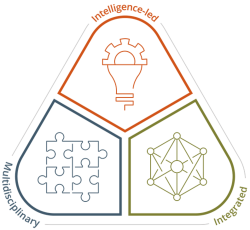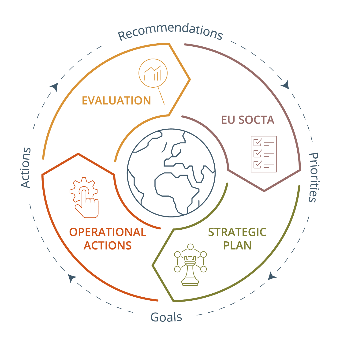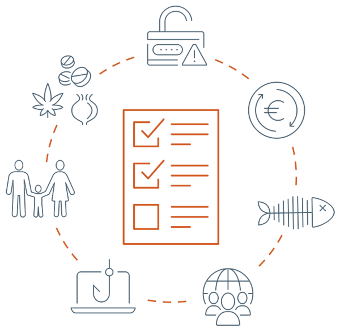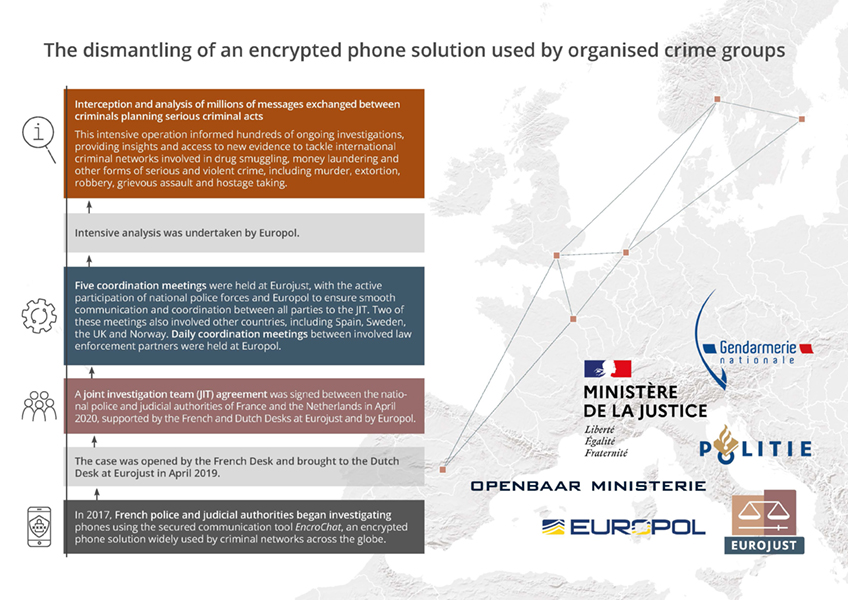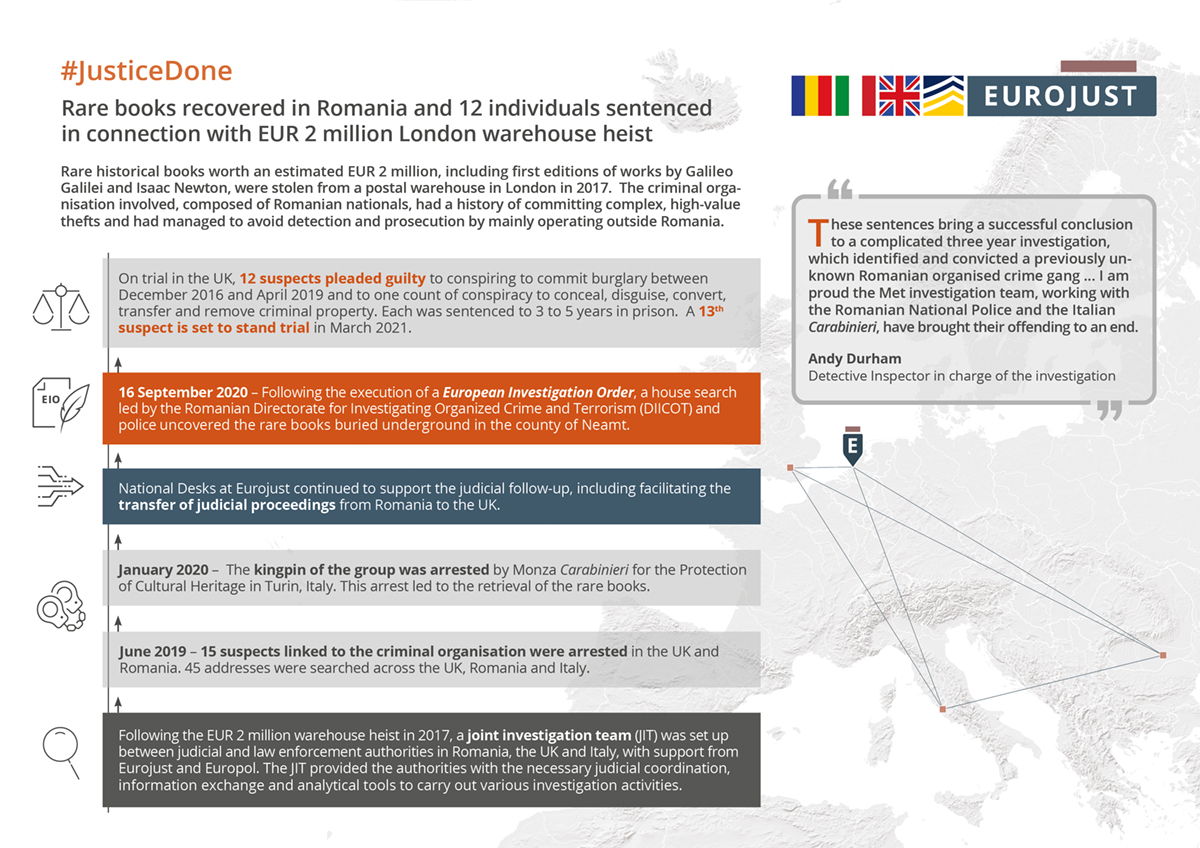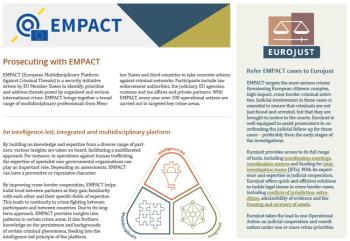EMPACT operates in four-year cycles. Every four years, Europol produces the European Union Serious and Organised Crime Threat Assessment (EU SOCTA), based on input provided by Member States and other stakeholders, including Eurojust. The EU SOCTA identifies the major criminal threats affecting the European Union and sets out potential crime priorities.
The EU SOCTA is then used by the European Commission and the Presidency of the Council of the European Union to advise Justice and Home Affairs ministers so they adopt the EU crime priorities being fought by EMPACT over the following four years. A multi-annual strategic plan and corresponding goals are drawn up based on these key priorities to form the basis of Operational Action Plans (OAPs).
For each action plan, so-called drivers and co-drivers are appointed who oversee the planning with assistance from national EMPACT coordinators (NECs). Concrete actions are organised for the particular targeted crime areas, leading to joint operational actions days or weeks. The process is constantly monitored and fully evaluated at the end of each cycle.
Funding is available to assist in drawing up Operational Action Plans and to support the preparations for setting up strategic coordination structures.
Within the action plans, the EU Member States are the central actors, assisted by Eurojust and Europol through operational, logistical and financial support (see also tab Judicial dimension). The nation EMPACT coordinators align their Member State’s involvement and contributions to all action plans. They also keep their national authorities regularly informed and ensure the implementation of decisions and recommendations by the Council’s Standing Committee on Operational Cooperation on Internal Security (COSI). National EMPACT coordinators also oversee the allocation of required human and financial resources for Operational Action Plans.
The key stages of EMPACT:
- Analysis of current and future threats (EU SOCTA)
- Strategic planning based on SOCTA findings and priorities identified
- Operational actions based on goals identified in strategic plans
- Evaluation of actions undertaken
EMPACT cycle (2026-2029)
For each four-year cycle, priority crime areas are determined by the Council of the European Union based on the EU SOCTA. For the 2026-2029 cycle, the following key areas were identified for priority action:
- Identifying and disrupting the most threatening criminal networks and individuals
- Tackling the fastest growing crimes in the online sphere: cyber-attacks, online child sexual exploitation and online fraud schemes
- Fighting drug trafficking
- Tackling migrant smuggling and trafficking in human beings
- Targeting firearms and explosives crime
- Disrupting networks involved in environmental crimes
- Fighting economic and financial crimes such as VAT fraud and intellectual property crime
The priorities take into account that serious and organised crime is progressively destabilising our societies (e.g. by spreading violence and corruption), it is increasingly happening online and is strongly accelerated by artificial intelligence and other new technologies.
Further details of the 2026-2029 cycle can be found in the Council document Council conclusions on the enhancement of EMPACT and on EU crime priorities for the next EMPACT cycle 2026-2029
EU SOCTA 2025:
In March 2025, Europol published the 2025 European Union Serious and Organised Crime Threat Assessment (EU SOCTA), highlighting that the DNA of organised crime is fundamentally changing, altering the landscape of organised crime:
- Crime is increasingly destabilised
- Crime is nurtured online
- Crime is accelerated by the AI and emerging technologies
In addition the 2025 SOCTA highlights the fastest-growing threats in seven key areas:
- Cyber-attacks, mostly ransomware targeting critical infrastructure, governments, businesses and individuals – often with state-aligned objectives.
- Online fraud schemes, increasingly driven by AI-powered social engineering and access to vast amounts of data including stolen personal information.
- Online child sexual exploitation, with generative AI producing child sexual abuse material and facilitating online grooming.
- Migrant smuggling, with networks charging extortionate fees and showing complete disregard for human dignity, exploiting geopolitical crises.
- Drug trafficking, a diversifying market with changing routes, modus operandi and the potential further spread of violence and recruitment of young people across the EU.
- Firearms trafficking, which is expanding due to technological advancements, online marketplaces and weapons availability in Europe.
- Waste crime, an often overlooked but lucrative sector where criminals exploit legitimate businesses, severely impacting the environment.

